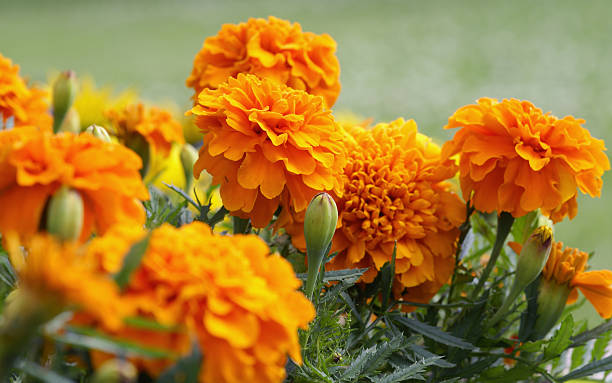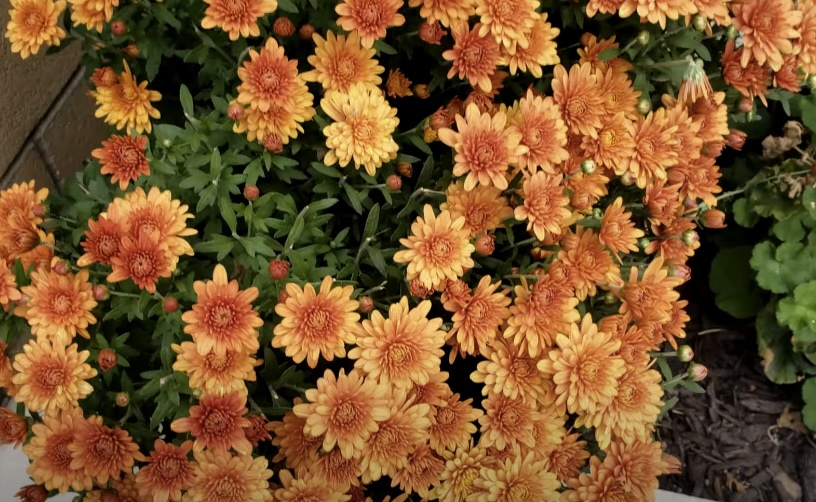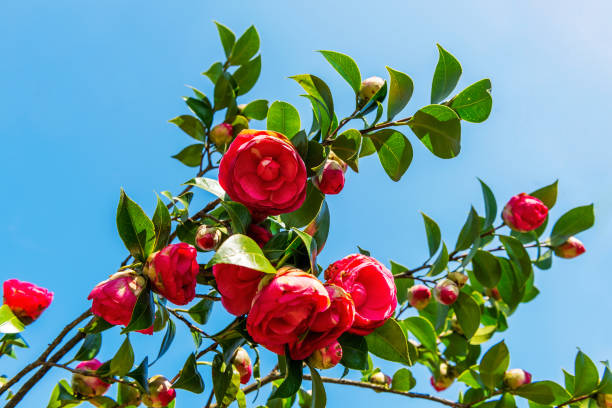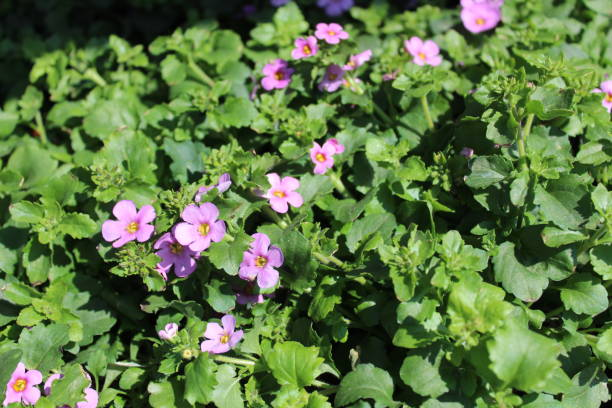Autumn in New Zealand is a season of vibrant colors and milder temperatures—a perfect time for garden enthusiasts to plant flowers that will thrive. Selecting the right flowers to plant in autumn in NZ can transform your garden into a riot of colors even as the cooler months approach. In this article, we will explore the top five flowers suited for autumn planting in New Zealand, providing tips on how to care for them, and answering some common questions gardeners might have.
1. Chrysanthemums: The Show-Stoppers
Chrysanthemums, affectionately known as ‘mums’, stand as some of the most beloved flowers for autumn planting in New Zealand. Their vibrant array of hues, including yellow, red, pink, and white, make them an enchanting sight in any autumn garden.
Why Plant Chrysanthemums in Autumn?
Chrysanthemums possess distinct advantages that make them particularly suited for autumn planting in NZ:
- Robust Blooms: Chrysanthemums thrive amidst the cooler temperatures of late summer and autumn. As the days grow shorter and temperatures drop, these resilient flowers come into their own, showcasing their vibrant colors with unparalleled beauty.
- Long-lasting Appeal: One of the most appealing features of chrysanthemums is their prolonged blooming period. While many other flowers begin to fade as autumn progresses, chrysanthemums continue to flourish, offering a burst of color well into the colder months.
Care Tips
Proper care is essential to ensure the health and vitality of chrysanthemums throughout their growing season. Here are some key tips to keep in mind:
- Sunlight: Chrysanthemums thrive in full sunlight, requiring a minimum of 5-6 hours of direct sunlight each day. Planting them in a location with ample sun exposure is crucial for promoting healthy growth and abundant blooms.
- Soil: Optimal soil conditions are vital for chrysanthemums to thrive. Plant them in well-draining soil to prevent waterlogging, which can lead to root rot and other moisture-related issues. A loamy soil rich in organic matter is ideal for promoting healthy root development and robust growth.
- Watering: Maintaining appropriate soil moisture is key to the well-being of chrysanthemums. While they prefer consistently moist soil, it’s essential to avoid overwatering, as excessive moisture can promote fungal diseases and other issues. Make sure the soil is evenly wet but not soaked with water when you water fully and thoroughly. Putting mulch around the base of plants can help keep the soil wet and keep the temperature stable.
2. Pansies: The Cold Weather Champions

Pansies emerge as the quintessential choice for autumn planting in New Zealand, boasting remarkable resilience in cold weather conditions. With their diverse array of colors, ranging from single bold hues to intricate bi-colored or tri-colored patterns, pansies add a vibrant touch to any garden landscape, making them a favorite among gardeners.
Why Plant Pansies in Autumn?
Pansies offer several compelling reasons for their popularity as autumn flowers in NZ:
- Frost Tolerance: Pansies exhibit remarkable frost tolerance, allowing them to withstand the cooler temperatures typical of New Zealand’s autumn season. This resilience makes them well-suited for thriving in the chilly conditions that characterize autumn in the region.
- Long Blooming Period: Pansies boast an extended blooming period, providing continuous bursts of color throughout autumn and even into winter under favorable conditions. Their ability to bloom prolifically despite the onset of colder weather makes them invaluable additions to autumn gardens, ensuring that outdoor spaces remain vibrant and inviting.
Care Tips
To ensure the health and vitality of pansies throughout the autumn season, it’s essential to provide them with proper care and attention. Here are some key tips to guide their cultivation:
- Sunlight: Pansies thrive in environments with ample sunlight exposure, although they can also tolerate partial shade. Plant them in locations where they can receive at least 4-6 hours of sunlight per day to promote robust growth and abundant flowering. In areas with intense summer heat, partial shade during the hottest part of the day can help prevent stress and prolong blooming.
- Soil: Optimal soil conditions are crucial for the well-being of pansies. Plant them in rich, well-drained soil to prevent waterlogging, which can lead to root rot and other moisture-related issues. Using organic materials, including compost, helps the soil to become more fertile and structurally strong, providing an ideal growing medium for pansies.
- Feeding: While pansies are relatively low-maintenance plants, they benefit from periodic feeding to support healthy growth and prolific blooming. Apply a balanced, water-soluble fertilizer formulated for flowering plants according to package instructions, avoiding overfeeding, which can result in excessive foliage growth at the expense of flowers. A light application of fertilizer every 4-6 weeks during the growing season can help promote continuous flowering without overwhelming the plants.
3. Aster: The Starry-Eyed

Asters emerge as an excellent choice for autumn planting in NZ, adding a delightful splash of color late in the garden season. These star-shaped flowers, available in shades of blue, purple, pink, and white, captivate with their charming appearance, making them a beloved addition to autumn gardens across the region.
Why Plant Asters in Autumn?
There are several compelling reasons to consider planting asters in autumn:
- Attracts Pollinators: Asters serve as valuable magnets for pollinators, including bees and butterflies, enhancing the ecological diversity of your garden. By attracting these beneficial insects, asters contribute to the pollination of nearby plants, promoting healthy growth and abundant harvests.
- Disease Resistance: Asters exhibit a commendable level of resistance to many common garden pests and diseases, making them relatively low-maintenance plants compared to other flowering varieties. Their resilience to common threats allows gardeners to enjoy their beauty without the constant worry of pest infestations or disease outbreaks.
Care Tips
To ensure the optimal growth and blooming of asters, it’s essential to provide them with proper care and maintenance. Here are some key tips to guide their cultivation:
- Sunlight: Asters thrive in full sunlight, requiring at least 6-8 hours of direct sunlight each day to bloom prolifically. Plant them in locations where they can receive ample sunlight exposure, ensuring that they can harness the energy needed for robust growth and vibrant flowering. Insufficient sunlight can lead to leggy growth and reduced blooming, so choose planting sites with adequate sun exposure for optimal results.
- Soil: Optimal soil conditions are essential for the health and vitality of asters. Plant them in loamy, well-drained soil that provides good aeration and moisture retention. Avoid heavy clay soils that can become waterlogged, as excessive moisture can lead to root rot and other issues. Incorporating organic matter, such as compost or aged manure, into the soil can improve its structure and fertility, providing an ideal growing medium for asters.
- Spacing: Proper spacing is crucial for asters to thrive and reach their full potential. Space plants about 1-2 feet apart to ensure adequate air circulation and prevent overcrowding. Good air circulation helps reduce the risk of fungal diseases and promotes overall plant health and vigor. Avoid overcrowding, which can lead to competition for resources and increased susceptibility to pests and diseases.
4. Marigolds: The Golden Delight

Marigolds stand out as one of the easiest and most rewarding flowers to plant in autumn in NZ, boasting rich golden, orange, and copper tones that add warmth and vibrancy to any garden landscape. Beyond their visual appeal, marigolds are celebrated for their remarkable pest-repellent properties, making them invaluable allies in the garden.
Why Plant Marigolds in Autumn?
Planting marigolds in autumn offers numerous benefits:
- Pest Repellent: Marigolds emit a distinctive scent that acts as a natural deterrent against pests, including aphids, nematodes, and whiteflies. By planting marigolds alongside other plants, gardeners can help protect their garden from destructive insect infestations, reducing the need for chemical pesticides and promoting a healthier, more balanced ecosystem.
- Versatile: Marigolds are incredibly versatile plants that lend themselves well to various garden settings. Whether used as borders, planted in containers, or incorporated as companion plants in vegetable gardens, marigolds add visual interest while also serving practical functions, such as pest control and soil improvement.
Care Tips
Proper care is essential to ensure the health and vitality of marigolds. Here are some key tips for successful cultivation:
- Sunlight: Marigolds thrive in full sunlight, requiring at least 6-8 hours of direct sunlight each day to bloom profusely. Plant them in locations where they can receive ample sunlight exposure, such as along sunny borders or in raised beds with unobstructed sunlight. Insufficient sunlight can lead to leggy growth and reduced flowering, so prioritize sunny spots for optimal performance.
- Soil: While marigolds prefer well-drained soil, they are remarkably tolerant of various soil types, including sandy, loamy, and clay soils. However, they thrive best in fertile, well-drained soil that provides good aeration and moisture retention. Incorporating organic matter, such as compost or aged manure, into the soil can improve its structure and fertility, enhancing the overall health and vigor of marigold plants.
- Watering: When watering marigolds, it’s essential to water at the base of the plants to avoid wetting the foliage, which can increase the risk of fungal diseases, such as powdery mildew. Water deeply and thoroughly, ensuring that the soil is evenly moist but not waterlogged. Mulching around the base of the plants can help retain soil moisture and suppress weed growth, contributing to the overall health and well-being of marigolds.
5. Snapdragons: The Vertical Accent

Snapdragons offer a distinctive vertical element to garden landscapes with their tall, spike-like blooms. These autumn flowers in NZ come in a wide array of colors, ranging from soft pastels to vibrant hues, adding height, texture, and visual interest to floral arrangements and garden borders.
Why Plant Snapdragons in Autumn?
Planting snapdragons in autumn offers several advantages:
- Height Variety: Snapdragons are available in a range of heights, including dwarf, medium, and tall varieties, allowing gardeners to choose plants that suit their specific garden design preferences. Whether used as focal points in flower beds or to provide vertical accents in mixed borders, snapdragons offer versatility in height that enhances the overall aesthetic appeal of the garden.
- Cool Weather Tolerant: Snapdragons thrive in cooler weather conditions and can tolerate mild frosts, making them well-suited for autumn planting in NZ. As temperatures begin to drop and other summer flowers fade, snapdragons continue to bloom profusely, injecting vibrant color and vitality into the autumn garden landscape.
Care Tips
To ensure the health and vigor of snapdragons, proper care and maintenance are essential. Here are some key tips to guide their cultivation:
- Sunlight: Snapdragons thrive in environments with ample sunlight exposure, although they can also tolerate partial shade. Plant them in locations where they can receive at least 4-6 hours of sunlight per day to promote robust growth and prolific blooming. In areas with intense summer heat, partial shade during the hottest part of the day can help prevent stress and prolong blooming.
- Soil: Optimal soil conditions are crucial for the well-being of snapdragons. Plant them in rich, well-drained soil that provides good aeration and moisture retention. Amending the soil with organic matter, such as compost or aged manure, can improve soil fertility and structure, creating an ideal growing environment for snapdragons.
- Staking: Taller varieties of snapdragons may require support to prevent them from bending or breaking under the weight of their blooms. Install stakes or plant supports near the base of the plants, and gently tie the stems to the supports using soft garden twine or plant ties. This will help keep the plants upright and prevent damage to the stems and flowers, ensuring a tidy and attractive appearance in the garden.
Conclusion
By choosing the right flowers to plant in autumn in NZ, you can ensure your garden remains a colorful sanctuary even as the temperatures drop. Each flower type brings its own unique beauty and advantages, making your autumn garden a vibrant and lively space.
FAQ
The ideal time to start planting autumn flowers in New Zealand is from late February to early April, depending on your local climate conditions.
Watering needs vary among different flower types, but generally, it’s important to keep the soil moist, especially during dry spells. Always check the soil moisture level before watering.
Pansies and snapdragons can tolerate mild frosts. However, it’s best to provide some protection, like mulch or a frost cloth, during severe frosts to ensure they survive the winter.
Use a balanced, slow-release fertilizer that will provide continuous nutrients throughout the blooming period. Avoid high-nitrogen fertilizers, which can promote foliage at the expense of flowers.




